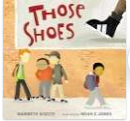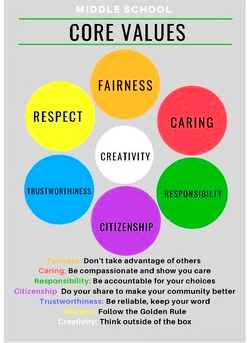TL;DR:
- Implicit bias is when people hold ideas about groups of people without consciously realizing it.
- Directly teach students about bias so that they can identify it and stop it when they see it.
“Equity and Inclusion Just Got Better” Blog Reflection Questions:
- Why is it important to consider implicit bias?
- How do you plan on addressing implicit bias when you spot it in yourself?
- Identify barriers you may have so you can address implicit bias.
I loved writing a chapter about leadership styles in the upcoming Digital PD Resource for Educators. Leadership is hugely impacted by bias. That is why we all should reflect by examining our unconscious bias whenever possible as a self-check-in!
Implicit Bias Defined
This is important: know. Yes, know that you and I are going to be biased at some given point in time when facing an unfamiliar situation. The key is to know how to address it as an educator.
The Perception Institute states, “we use the term ‘implicit bias’ to describe when we have attitudes towards people or associate stereotypes with them without our conscious knowledge.”
Implicit bias is when we automatically state an opinion or make a decision based on a belief system. We have to be aware and educated on how to be unbiased so that individuals, systems, and institutions do not continue to create barriers based on bias.
“This is important: know. Yes, know that you are going to be biased. The key is to know how to address it as an educator teaching the next generation.” Share on XLesson Idea
- Include media and your favourite book in teaching to compare perspectives.
- Include race as a concept since that is what we are trying to teach about.
- Bring out the concept of bias as we talk about race and class to help clear the path for productive discussions.
We are currently focusing on addressing anti-Black racism.
Toronto Artist Drake’s: Song God’s Plan Link
The book, Those Shoes! can generate about wants and needs.

Compare the song and book using the four square template to share opinions and ideas by organizing our thinking.
Unconscious Bias
Unconscious bias can be addressed by acknowledging it and learning how to address it.
Teach bias explicitly so that students can identify it when they see it and stop it from happening.
[scroll down to keep reading]Consider Community Connections
- Respect differences of opinions.
- Pick concepts from others that you liked so you can understand their perspectives.
- Build strong classroom relationships to share your thoughts openly and grow while learning.

https://www.teacherspayteachers.com/Product/Core-Value-Character-Education-Poster-4005706
I believe in this frame of mind. Teaching values, with a dose of accepting differences and moving towards a global education mainframe, will make a positive impact in the generations to come.
Teaching values, with a dose of accepting differences and moving towards a global education mainframe, will make a positive impact in the generations to come. Share on XPlease stay connected and share your thoughts on teaching with equity and inclusion at the core of your lesson plans. I would love to see the bigger impact of these blogs.
I wish you a restful summer vacation that is well earned. Stay in touch via social media!
Yours in Education,
Nilmini
Reference
https://perception.org/research/implicit-bias/
https://www.teacherspayteachers.com/Product/Core-Value-Character-Education-Poster-4005706
About Nilmini Ratwatte-Henstridge
Nilmini Ratwatte-Henstridge teaches in Brampton, Ontario, Canada. She was born in Sri Lanka and immigrated to Canada with her family. As an elementary school teacher who is passionate about equity, social justice, and human rights in education, she enjoys teaching the younger generation to be global-minded citizens.
Discovering the world by connecting with others is an opportunity that we have today in our society today and she loves meeting new people! She is always learning while traveling to understand the inter-connectedness of this beautiful earth we live in! Nilmini LOVES cooking great meals, watching movies, and the latest fashion trends! Family and friends are close to her heart as she looks forward to balancing social media and navigating professional learning communities in education to network globally this year!




